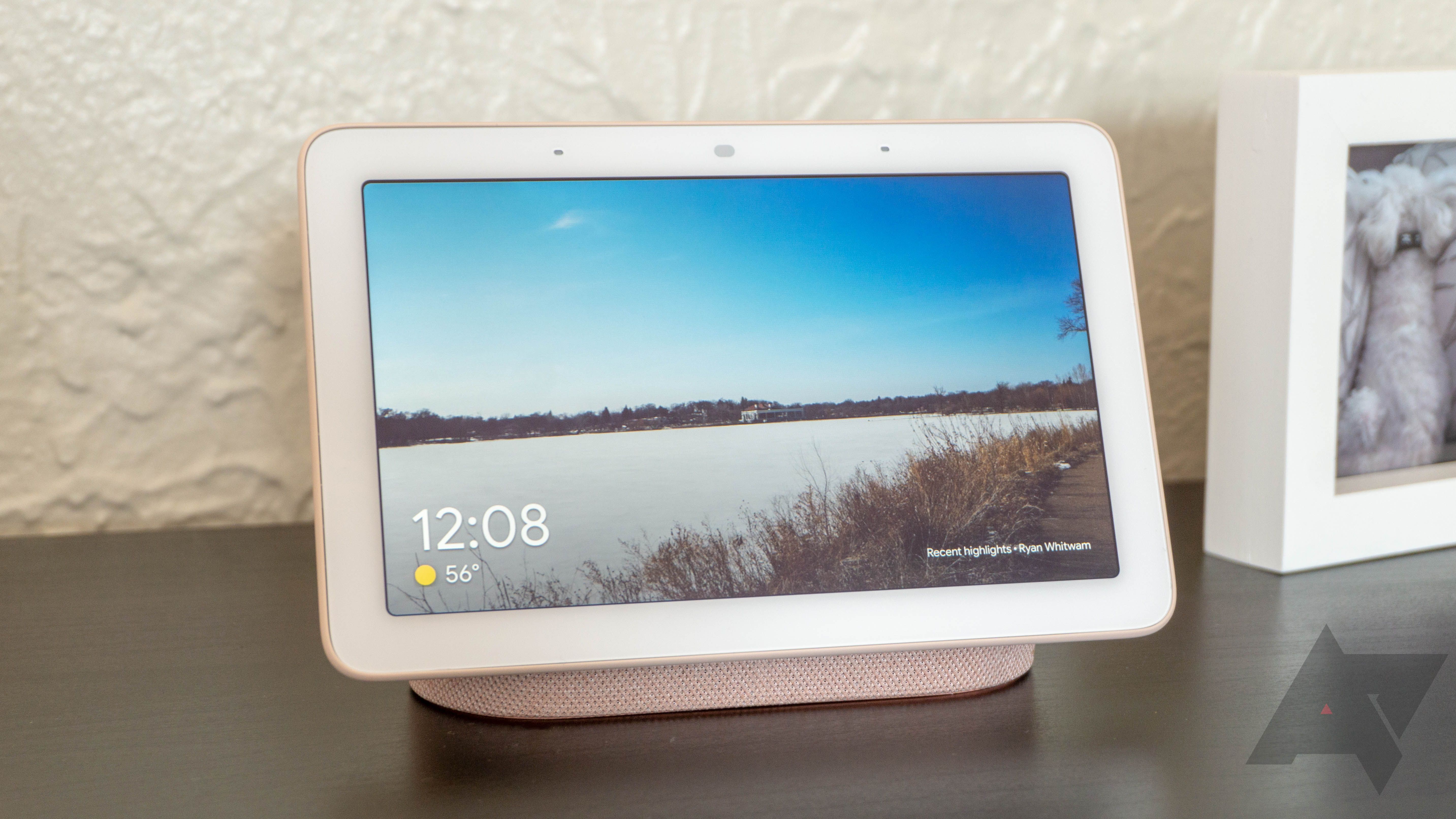Read update
- More details on personalized notifications, privacy, and opt-out option
Google's smaller Home Nest Hub doesn't come with a camera as the company initially wanted to avoid people from believing it would spy on them. Still, with the launch of the camera-equipped Nest Hub Max, it was clear it noticed customers are comfortable with trading their privacy for a plethora of features. Among other things, the Hub Max offers gesture control through its camera, which lets you play and pause media by raising a hand. Now Google is adding a new ultrasonic sensing feature that allow both the smaller and the bigger Hub to react to nearby people without the use of a camera.
The interface when you move farther away from the Nest Hub.
Ultrasonic sensing was first introduced with the Nest Mini and the Nest Wifi satellites. On the Nest Hubs, it sends out high-frequency noises through their speakers, which they listen back to via their microphones (Engadget confirmed with Google that the frequency shouldn't disturb your pets' more sensitive hearing). The displays can detect people up to five feet away and tailor their interface accordingly.
Touch controls and more information exposed when you move closer.
When you're close to the screen, the Hub will automatically expand weather cards and expose touch controls. When you're walking farther away, the Nest Hubs will increase the font size and graphics to make timers, weather reports, media playback information, and commute maps more easily readable while hiding touch controls you can't reach anyway. The smaller Nest Hub also gains the ability to show proactive notifications, just like the Hub Max. Since it doesn't have a face-matching camera, it won't customize the experience towards specific household members and only shows cards available to anyone, without private information.
Ultrasonic sensing on the Nest Mini.
Google tells us the ultrasound technology has started rolling out to both the Hub and Hub Max today. The company doesn't use the camera for these features in either smart display; it solely relies on ultrasound on both.
UPDATE: 2019/11/07 12:09am PST BY MANUEL VONAU
More details on personalized notifications, privacy, and opt-out option
Google detailed when exactly Nest Hub and Nest Hub Max will show personal notifications:
If you have Personal results and Home screen & notifications on your Nest Hub display turned on, Ultrasound sensing will show pending notifications on the ambient screen if you’re nearby. For Nest Hub Max displays, if you have enrolled in Face Match and have personalization turned on, notifications will show when you are Face Matched by the device. If you are not enrolled in Face Match but you do have notifications and personalization turned on, Ultrasound sensing will show pending notifications if you’re nearby.
To turn ultrasound sensing off temporarily, just mute your smart display with the switch on the back. If you want to stop the feature from working permanently, open the Google Home app, head to the settings (gear icon) of the device in question, and look for the Ultrasound sensing entry with an on/off toggle.
Further, Google emphasizes that ultrasound sensing is processed locally on your device. No motion, proximity, or presence sensor data is sent to the cloud.
Source: Google
Image source: Reddit
Thanks: David

